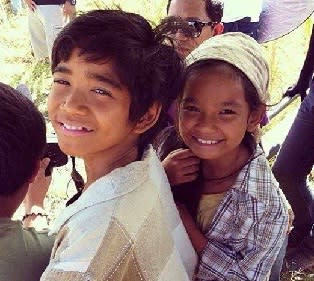The Filipino teleserye comes of age

By Pablo A. Tariman, VERA Files
If the first five episodes of “Ikaw Lamang” are of any indication, it is the fact that the network has produced a teleserye with the looks and inherent appeal of a well-made film.
It is billed as period drama and romance set in the haciendas in the south and indeed it lives up to the genre.
The initial episodes begin with the main characters played by child actors namely Zaijan Jaranilla as the young Samuel (later played by Coco Martin), Xyriel Manabat as the young Mona (later played by Julia Montes), Louise Abuel as the young Franco (later played by Jake Cuenca) and Alyanna Angeles as the young Isabel (later played by Kim Chiu).
The first episodes are indeed dominated by the young actors who acted with such intensity you wished the teleserye ended with them as well. Angeles as the young Isabel projected the pathos of young love and so did the amazing Jaranilla as the young Samuel. Abuel’s innocent look contrasted with his sinister transformation and Manabat as the young Mona carved an effervescent portrait of one destined to be a hapless recipient of unrequited love.
If the young actors dazzled, the veterans electrified with such fire and poignancy not seen in Philippine television for many years.
Cherry Pie Picache as the wife of a sakada played her part with all the uncertainty and vulnerability of a farm worker’s life with Spanky Manikan and Daria Ramirez giving the parts the realism only their acting prowess can give justice to.
But the scheming hacienda cabo played by Ronnie Lazaro was astoundingly real he could end up the most hated character in the first part of the teleserye and so did the part of Gonzalo played with aplomb by John Estrada. The grandpa part of Ronaldo Valdez has many layers and the actor emerged triumphant in every scene. Thus far, this is the finest performance of Tirso Cruz III (as the town mayor) in many years.
Cherie Gil and Angel Aquino as the politicians’ wives in the hacienda are equal stand-outs, giving their parts an uncanny many-layered performance worthy of acting trophies.
As the first episodes reveal, “Ikaw Lamang”, which started airing Monday this week, unfolds in the 60s and the teleserye made sure the viewers recall the decade when it flashed footage of Gloria Diaz winning the country’s first Miss Universe title in 1969. The first week episode ends in the early 70s shortly after the declaration of martial law. Again, the viewers are treated to footage of Margie Moran Floirendo winning the country’s second Miss Universe title. Shortly after, the homecoming episode of the previously London-based Negrense played by Kim Chiu unfolds with hacienda workers welcoming the hacienda’s heir with anti-martial law protesters in the background. That historic year is not lost on the viewers who are treated to a rendition of the Bagong Lipunan March.
The first week episode ends with Samuel (Martin) seeing his best friend Mona (Montes) and his beloved Isabel (Chiu) after many years. From the shrieks and screaming of preview audiences, you can tell the network has a winner in this teleserye.
Martin -- garbed in a sakada’s get-up and enjoying the sight of the now grown-up Isabel played by Chiu – gives us a highly fascinating preview of what is in store for the new love team in the remaining episodes.
As it is, "Ikaw Lamang" has the unusual breadth and visual sweep of good cinema. So far, it exhibits fairly excellent writing and ensemble acting at its best. The sensitive direction of Malu L. Sevilla and Avel E. Sunpongco leaves nothing to be desired.
If this remarkable impression is sustained in the remaining episodes, you can say the Filipino teleserye has come of age.
The TV special “Si Ser Chief, Si Maya at Ang Teleserye” directed last year by Cheche Lazaro gave both producers and audiences a bird’s eye view of what kinds of teleserye materials would click and likely to be ignored.
Award-winning screenwriter Ricky Lee (he has worked as creative manager of ABS CBN) earlier opined the direction of the teleserye almost always depends on the feedback they get from the audience. “Yes, we write the story but most of the inputs in the teleserye we also get from the audience. The teleserye villain gains popular acceptance when he or she becomes widely ‘hated’ as in the case of Regala of Ina, Kapatid, Anak.”
The Lazaro TV special traced the Philippine teleserye from the time of the “Gulong ng Palad” in the 50s to the reign of Janice de Belen and Judy Anne Santos as child stars of Philippine teleserye and the time the Filipino favorite soap operas invaded Brunei, Myanmar, China, Indonesia, Hong Kong, Singapore, Vietnam, Korea and Taiwan.
(VERA Files is put out by veteran journalists taking a deeper look at current issues. Vera is Latin for “true.”)



